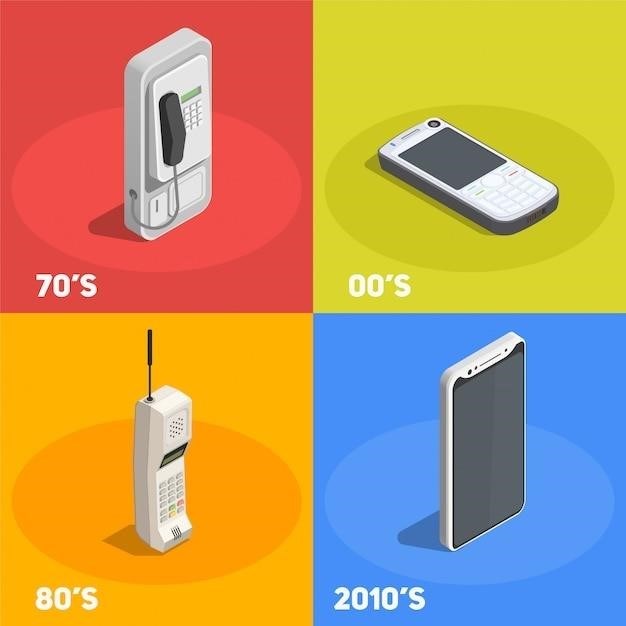Canon EOS 350D⁚ A Comprehensive Guide
The Canon EOS 350D, also known as the EOS Digital Rebel XT in the Americas and the EOS Kiss Digital N in Japan, is a popular entry-level DSLR camera. This guide provides a comprehensive overview of its features, specifications, performance, and usability.
Introduction
The Canon EOS 350D, released in 2005, was a groundbreaking camera that brought advanced DSLR features to a wider audience. It was lauded for its affordability, user-friendliness, and impressive image quality, making it a popular choice for both beginners and experienced photographers. This digital SLR camera offered a substantial upgrade from its predecessor, the EOS 300D, with its 8-megapixel CMOS sensor, a larger LCD screen, and a faster autofocus system. The EOS 350D also introduced the EF-S lens mount, designed specifically for APS-C sized sensors. This manual provides a detailed guide to the EOS 350D’s key features, performance, and functionality, helping you to get the most out of this versatile camera.
Key Features and Specifications
The Canon EOS 350D boasts a range of features that made it a standout camera in its time. At the heart of the camera is an 8-megapixel CMOS sensor, capable of capturing high-resolution images. The camera’s autofocus system utilizes nine cross-type sensors, providing accurate and fast focusing performance, especially in low-light conditions. The EOS 350D also features a 2.5-inch LCD screen, offering clear image review and menu navigation. The camera’s shooting modes include Program, Aperture-priority, Shutter-priority, Manual, and a variety of scene modes for various photographic situations. The EOS 350D’s compact and lightweight design makes it easy to carry and use, while its compatibility with Canon’s extensive range of EF and EF-S lenses provides great flexibility in terms of focal length options.
Image Quality and Performance
The Canon EOS 350D delivers impressive image quality for its time. Its 8-megapixel sensor captures detailed images with good dynamic range, especially in well-lit conditions. The camera’s RAW shooting capability allows for greater flexibility in post-processing, enabling adjustments to exposure, white balance, and other parameters. The 350D’s performance is commendable, with a continuous shooting rate of up to 3 frames per second. While the camera’s autofocus system is generally accurate and fast, it can struggle in low-light situations, especially when shooting moving subjects. However, the EOS 350D’s image stabilization features, when combined with compatible lenses, effectively minimize camera shake and produce sharper images, even in low-light conditions.
Camera Body and Design
The Canon EOS 350D boasts a compact and ergonomic design that makes it comfortable to hold and use. Its lightweight body, constructed from durable polycarbonate, is designed to withstand everyday use. The camera’s controls are well-placed and easy to access, with dedicated dials for shutter speed, aperture, and ISO settings. The 350D features a large, bright optical viewfinder that provides a clear view of the scene, while its 2.5-inch LCD screen is adequate for reviewing images and navigating menus. The camera’s design incorporates a built-in flash for low-light photography, as well as a hot shoe for attaching external flashes for greater creative control. The EOS 350D’s compact size and user-friendly design make it an excellent choice for both beginners and experienced photographers who are looking for a reliable and versatile DSLR camera.
Lens Compatibility
The Canon EOS 350D benefits from its compatibility with Canon’s extensive EF lens system, offering a wide range of options for photographers of all levels. This includes both standard and specialized lenses, covering focal lengths from wide-angle to telephoto. The camera also supports Canon’s EF-S lenses, which are designed specifically for APS-C sensor cameras like the 350D and provide a wider field of view. With its compatibility with both EF and EF-S lenses, the EOS 350D allows photographers to adapt their lens choices to their specific shooting needs, whether they are capturing landscapes, portraits, wildlife, or anything in between. This makes the EOS 350D a versatile camera with the potential for capturing a wide range of subjects and styles.
Shooting Modes and Controls
The Canon EOS 350D offers a variety of shooting modes designed to cater to different photography styles and skill levels. The camera features a user-friendly dial on the top plate that allows you to quickly switch between modes like Program (P), Aperture-priority (Av), Shutter-priority (Tv), Manual (M), and fully automatic (Auto). Additionally, the camera offers a range of scene modes, including Portrait, Landscape, Sports, Night, and Macro, which optimize settings for specific shooting situations. The 350D also includes a dedicated button for accessing the live view mode, allowing you to compose your shots on the camera’s LCD screen. For added control, the camera features a comprehensive set of buttons and dials, enabling adjustments to various settings like ISO sensitivity, white balance, and exposure compensation, providing photographers with the flexibility to fine-tune their images.
Manual Mode and Advanced Settings
For photographers seeking greater control over their images, the Canon EOS 350D offers a robust manual mode (M) that allows you to adjust both aperture and shutter speed independently. This gives you complete creative freedom to experiment with different exposure combinations and achieve desired effects. The camera also features a range of advanced settings that enhance its capabilities, including custom functions (C.Fn), which enable you to personalize camera behavior according to your preferences. For instance, you can configure the camera’s response to the shutter button, customize the autofocus system, and adjust the image quality settings. The 350D also supports RAW image capture, allowing you to capture unprocessed data for greater flexibility in post-processing. With its manual mode and advanced settings, the Canon EOS 350D empowers photographers to take control of their creative vision and explore the full potential of their camera.
Image Transfer and Storage
The Canon EOS 350D offers multiple options for transferring and storing your captured images. The camera features a built-in SD card slot, allowing you to record images directly onto compatible memory cards. You can then easily transfer these images to your computer using the provided USB cable or a card reader. The camera also supports the optional Canon CompactFlash card, providing an alternative storage option for larger image files. For those who prefer a more direct approach, the 350D can also be connected to a printer or a compatible TV via the composite video output. This allows for convenient printing or viewing of your images directly from the camera. Additionally, the camera supports PictBridge technology, enabling direct printing to compatible PictBridge printers without the need for a computer. These versatile transfer and storage options provide photographers with flexibility and convenience when managing their captured images.

Troubleshooting and Maintenance
While the Canon EOS 350D is a robust camera, occasional issues might arise. To address common problems, consult the user manual for troubleshooting tips. It covers topics like error codes, battery issues, and image quality problems. Regular maintenance is crucial for maintaining optimal performance. Avoid exposing the camera to extreme temperatures, humidity, or dust. When cleaning the camera body, use a soft, dry cloth. The lens should be cleaned with a lens cleaning kit, avoiding harsh chemicals. Regularly inspect the camera’s exterior for any signs of damage or wear. If you encounter persistent problems, consider contacting Canon customer support for assistance. By following these guidelines, you can prolong the life of your EOS 350D and ensure continued enjoyment of its capabilities.
The Canon EOS 350D, with its impressive features and user-friendly interface, remains a solid choice for photographers of all levels. Its 8-megapixel sensor, coupled with its compatibility with Canon’s extensive EF lens system, allows for high-quality images and versatility. While newer models offer advanced features and higher resolutions, the 350D continues to deliver reliable performance and is an excellent option for those seeking a balance of affordability and image quality; Its intuitive controls and shooting modes make it accessible for beginners, while its manual mode provides creative freedom for seasoned photographers. Whether you’re capturing everyday moments or exploring more advanced photographic techniques, the Canon EOS 350D remains a capable and enjoyable camera to use.






